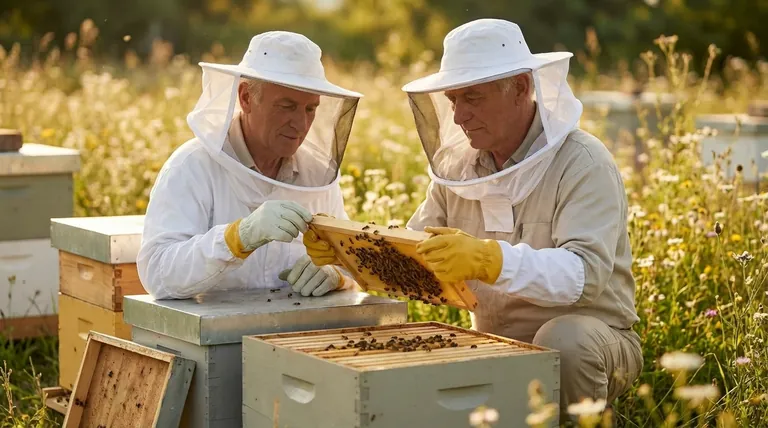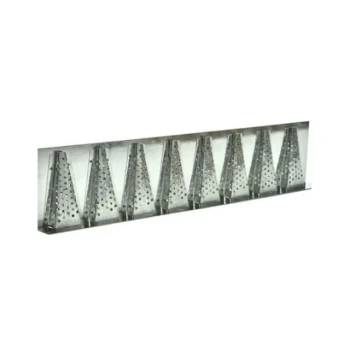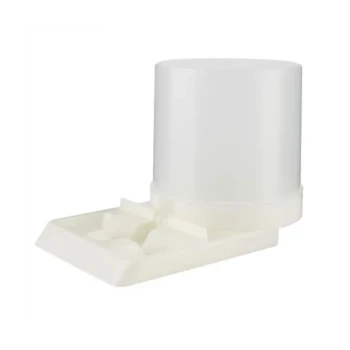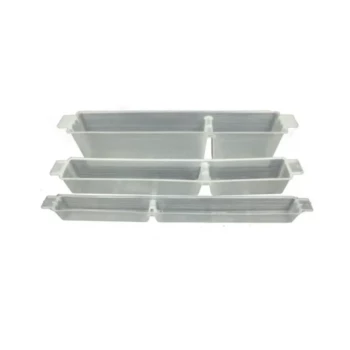At its core, an observation veil is a minimalist piece of protective equipment for beekeepers. It is designed to provide essential coverage for the head, face, and neck while maximizing freedom of movement and airflow, intended primarily for experienced individuals who are comfortable working closely with their hives.
The choice of beekeeping protection is not about which gear is superior, but about making a deliberate trade-off between absolute security and functional mobility. An observation veil represents the choice for maximum mobility, accepting a calculated increase in risk.

The Spectrum of Beekeeping Protection
Understanding the observation veil requires seeing it as one point on a spectrum of available gear. Each option serves a different purpose and is suited to a different level of experience and comfort.
The Foundation: Why Protection is Essential
Protective clothing is the first line of defense against bee stings. When bees feel threatened, they can become defensive.
Proper gear reduces the risk of painful stings, allowing the beekeeper to remain calm and focused on tending to the hive. This creates a safer, more enjoyable, and less stressful experience for both the beekeeper and the bees.
Maximum Security: The Full Suit
For beginners, a full beekeeping suit is the recommended standard. It offers complete, head-to-toe coverage.
This level of protection provides invaluable peace of mind, allowing a new beekeeper to learn how to handle bees without the fear of stings. The trade-off is often reduced dexterity and comfort, especially in warm weather.
The Purpose of the Observation Veil
The observation veil sits at the opposite end of the spectrum from the full suit. It is a tool for those who have moved past the initial fear of stings.
Its primary function is to protect the most vulnerable and critical areas—the face and neck—from defensive bees. However, it leaves the rest of the body exposed, relying on the beekeeper's skill and calm demeanor to prevent agitation in the hive.
Understanding the Trade-offs
Choosing your protective gear is about balancing competing priorities. What you gain in one area, you often sacrifice in another.
Risk vs. Mobility
The most obvious trade-off is between safety and mobility. A full suit offers the highest level of protection but can be cumbersome.
An observation veil, by contrast, provides unparalleled freedom of movement and comfort. This can be a significant advantage during quick inspections or in hot climates, but it comes at the cost of being exposed to stings on your body and arms.
The Role of Experience
Your experience level is the single most important factor in this decision. New beekeepers have not yet learned to read bee behavior or control their own movements to project calm.
An experienced beekeeper understands how to move slowly and deliberately, minimizing perceived threats to the hive. This skill, combined with a known tolerance for occasional stings, is what makes using an observation veil a viable option.
A Critical Point of Failure
Even with minimalist gear, proper use is essential. The primary risk of an observation veil is improper attachment. If a gap is left where the veil meets your shirt or collar, bees can and will find their way inside, creating a dangerous situation.
Making the Right Choice for Your Goal
Select your gear based on an honest assessment of your skills, your comfort level, and the temperament of your specific hives.
- If your primary focus is maximum safety and confidence: Start with a full beekeeping suit to build your skills without fear.
- If your primary focus is a balance of protection and comfort: A beekeeping jacket with a built-in veil is an excellent middle-ground for most hobbyists.
- If your primary focus is maximum mobility for quick inspections: An observation veil is a suitable tool for the experienced beekeeper who understands and accepts the associated risks.
Ultimately, the right gear is the one that allows you to focus on the health of your bees with confidence and calm.
Summary Table:
| Protective Gear | Best For | Key Feature | Trade-off |
|---|---|---|---|
| Full Suit | Beginners / Maximum Safety | Head-to-toe coverage | Reduced mobility & comfort |
| Jacket & Veil | Most Hobbyists | Balanced protection & comfort | Moderate coverage |
| Observation Veil | Experienced Beekeepers | Maximum mobility & airflow | Body/arms exposed to stings |
Ready to equip your apiary with the right protective gear?
Whether you're a commercial beekeeper managing hundreds of hives or a distributor stocking quality equipment, HONESTBEE supplies durable, professional-grade beekeeping supplies designed for efficiency and comfort.
We understand that your productivity depends on reliable gear. Let us help you find the perfect balance of protection and mobility for your specific needs.
Contact HONSTBEE today for wholesale pricing and expert advice tailored to your operation.
Visual Guide

Related Products
- Beekeeping Gloves Goatskin Leather with Long Cotton Sleeve for Beekeepers
- Mesh Ventilated 3 Layer Goatskin Beekeepers Gloves for Beekeeping
- Professional Galvanized Hive Strap with Secure Locking Buckle for Beekeeping
- Plastic Handle Single Row Artificial Fiber Bee Brush
- 8-Cone Galvanized Steel Bee Robber Guard
People Also Ask
- What is the difference between cleaning cow leather and goat leather beekeeping gloves? Tailor Your Care for Longevity
- Why are protective gloves important in beekeeping? Boost Confidence & Safety in Your Apiary
- Why is dexterity and flexibility important in beekeeping gloves? Boost Your Hive Management Efficiency
- What are the features of ventilated bee gloves? Stay Cool & Dexterous in Warm Weather
- Should beekeepers wear gloves, and why? Essential Protection for Beekeepers



















